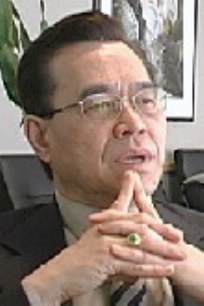- unknown (b.)
Bio/Description
A Chinese-born American technology entrepreneur, he founded Lam Research Corporation in 1980. He presently serves as Chairman of Multibeam Corporation (Santa Clara, CA), which manufactures complementary electron beam lithography (CEBL) systems. He also heads the David Lam Group, an investor and business advisor for high-growth technology companies. Born in Guangdong, China, he spent his early childhood in Cholon, Ho Chi Minh City in South Vietnam, a large ?Chinatown? near Saigon (renamed Ho Chi Minh City). His family, which fled from China to South Vietnam in the 1940s, eventually grew to include seven brothers and one sister. As their new home in Vietnam became an increasingly dangerous place to live in the mid-1950s, his parents moved most the family to Hong Kong. His interest in math and science grew during his teenage years in Hong Kong. After graduating from high school, he boarded a ship to North America, where he would subsequently pursue studies in Engineering and Physics at the University of Toronto. He received his Bachelor of Applied Science in Engineering Physics from the University of Toronto in 1967. During his undergraduate years, he performed Nuclear Physics research under Professor Derek Paul and co-authored a paper on Electron-Positron Annihilation in 1967. He earned his M.S. degree and Sc.D. degree (Chemical Engineering) in 1970 and 1973, respectively, from the Massachusetts Institute of Technology. During his post-graduate years, he was a co-inventor of a plasma-produced solid lubricant that was patented under the title, ?Fluorine Plasma Synthesis for Carbon Monofluoride?. His doctoral research included a paper titled, ?A Mechanisms and Kinetics Study of Polymeric Thin-film Deposition in Glow Discharge? that was published later in the Journal of Macromolecular Science ? Chemistry (1976). After graduating from MIT, he worked on plasma etching research and engineering at Texas Instruments and Hewlett-Packard. Although plasma etching was widely used in R&D during the 1970s, it had yet to prove practical in a production environment. He discovered the cause of etch variability was part technical and part human. The analog-controlled process lacked the precision required by the complex chemistry of plasma etching. Moreover, well-intentioned operators without authority often changed process settings that affected etch results. He envisioned a new type of production-grade plasma etcher that enabled: Digital control of process parameters to enhance accuracy and repeatability; Etching one wafer at a time in a small, load-locked environment to minimize ambient contamination and process variation; and total system automation to improve reproducibility and reduce human error. His approach was to provide the best controlled environment in which etching takes place by doing one wafer at a time, and provide load locks to isolate the wafer from the environment, from the ambient; thus minimizing contamination by particles or moisture in the air, or oxygen. He emphasized a lot on contamination control and reproducible environment. Two other things he did was the high degree of automation by introducing a microprocessor to control the entire equipment, doing away with the analog controls, the dials and switches. Everything was displayed on the screen for the first time in the industry. They were also able to store the recipe in a module called ?process recipe module?. It stored the optimized conditions worked out by the engineers. So the operators who are typically not engineers could not accidentally change the conditions or change the conditions without authorization. And the engineers would have a lot better control in setting the conditions for the process. The third item was using the modem for remote diagnostics. He was the first to use that communication device in support of the customers. These all combined to make the equipment more user-friendly, more reproducible, and more acceptable to managers who had the responsibility of producing the chips in a reliable and repeatable way. With seed capital provided by his widowed mother, he founded Lam Research Corporation in 1980, and demonstrated a fully automated working etcher about a year later. Under his guidance, the early stage venture gained a foothold in Japan and endured a double-dip recession. In 1984, he became the first Asian American to see the company he founded go public on the NASDAQ exchange. After leaving Lam Research as a full-time employee in 1985, he served on the eponymous company?s Board for five consecutive years. During this period and ensuing years he worked at other companies. He engineered the turnaround of Link Technologies, a computer-terminal company that was sold to Wyse Technology in 1987. He also led software development and marketing at ExpertEdge, and later formed the David Lam Group in 1995 to provide management advice and investment capital to early stage ventures as well as established companies in transition. He presently serves as Chairman of Multibeam Corporation, which pioneered the development of CEBL (complementary electron beam lithography) systems. As conventional optical lithography reaches its limits, the required photomasks become very expensive. CEBL systems can be incorporated into existing optical lines to reduce the number of expensive photomasks required for certain critical layers. He also serves on the Boards of private companies, including Microfabrica, and Qcept. In addition to his corporate experience, he was appointed by President George H. W. Bush to serve on the U.S. Commission on Minority Business Development and by California Chief Justice Malcolm Lucas to serve on the Commission on the Future of the Courts.?He was an advisor to President Bob Caret of the California State University at San Jose and served on the Visiting Committee of MIT. He is a Senior Fellow of the American Leadership Forum, and a member of the Board of Directors of the National Conference for Community and Justice of Silicon Valley (NCCJ). In 2013, he was inducted into the Silicon Valley Engineering Hall of Fame
-
Noted For:
Co-inventor of a plasma-produced solid lubricant that was patented under the title, “Fluorine Plasma Synthesis for Carbon Monofluoride" -
Category of Achievement:
-
More Info:


